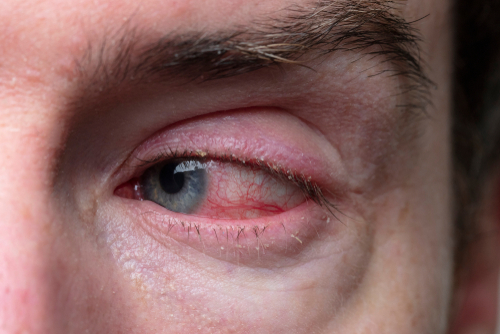3 Signs Your Dry Eyes Could Use Treatment

The beginning of fall can be incredibly irritating to your eyes. It brings ragweed, mold, and an increase in grass pollen.
These allergens can cause your eyes to become itchy and watery. But they also usually create other allergy symptoms.
If your eyes are getting irritated and bloodshot, but you aren’t sneezing or getting a runny nose, you may have dry eye syndrome.
If you are obsessively rubbing your eyes, it may be time to discuss dry eye treatments. So how do you decide whether you should seek a doctor’s opinion or treat your symptoms yourself?
Keep reading to learn more about dry eyes and three signs that your eyes need treatment.
A Stinging Scratchy Sensation in Your Eyes
If you regularly experience stinging, burning, or scratchiness in your eyes regardless of the time of year, you may have dry eye syndrome. It is a common eye condition that affects your tears and makes your eyes irritated, red, and swollen.
Dry eye syndrome can also cause blurred vision and excess tear production. It may become difficult to wear your contact lenses or even see clearly with eyeglasses if you have dry eye.
Feeling Like There is Something Stuck in Your Eye
Dry eye syndrome can make it feel like you have a foreign object in your eye. This feeling can be very uncomfortable and make your eyes continually water. If this is something you’ve experienced recently, then you may want to have your eyes checked.
Shortage or Abundance of Tears
When your eyes are dry, nerves in your corneas trigger the production of more tears. If you have dry eye syndrome and your eyes need more tears, one of two things may happen.
Your body may be underproducing tears, resulting in your dry eyes. If this is the case, you should work with your eye doctor to increase tear production.
Or, another condition called meibomian gland dysfunction (MGD) could be causing your dry eyes. MGD will cause you to overproduce tears but still have dry eyes.
It affects the oil-producing glands in your eyelids called the meibomian glands. The oil they make spreads across the surface of your tears as they flow onto your eye.
This layer of oil prevents tear evaporation, holding your tears onto your eyes. If the glands get blocked or are not making any oil, nothing prevents your tears from evaporating.
This situation is how you can overproduce tears but still have dry eyes. Your eyes constantly need more tears because they evaporate before nourishing your eyes.
How Do You Get Rid of Dry Eye Symptoms?
There are things you can do to treat your dry eyes at home. These help you to protect your eyes during flare-ups and before you get treated by your eye doctor:
- Use eye drops
- Take short breaks when concentrating on a book or computer screen
- Splash cool water on your eyes and eyelids
- Apply a warm compress over your eyes
- Ask your primary care doctor to take you off medications that could be causing dry eyes
- Add omega-3 fatty acids to your diet
- Quit smoking
- Use a humidifier to add moisture into the air
- Blink frequently throughout the day
If these remedies don’t work, or you would like to find out if you have dry eye syndrome, schedule an appointment at Vermont Eye Laser in Burlington, VT. Get rid of your dry eyes this fall!



